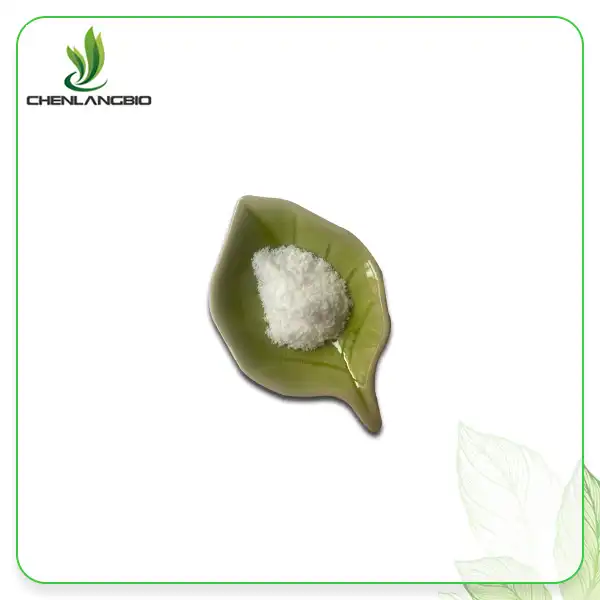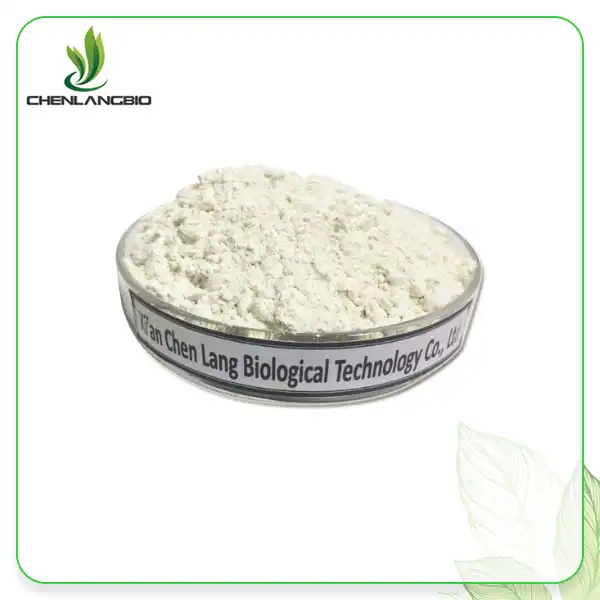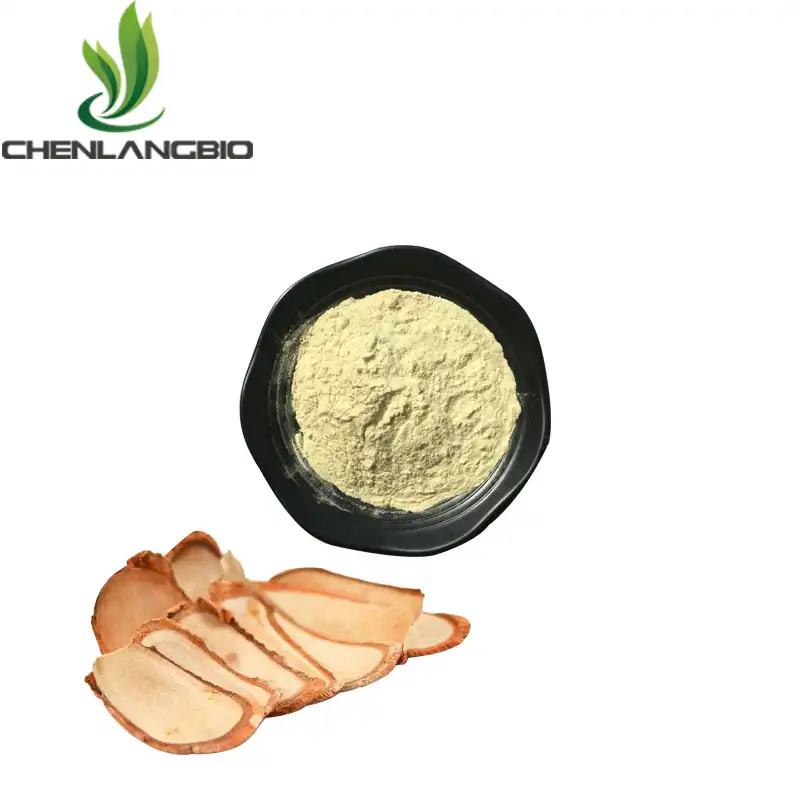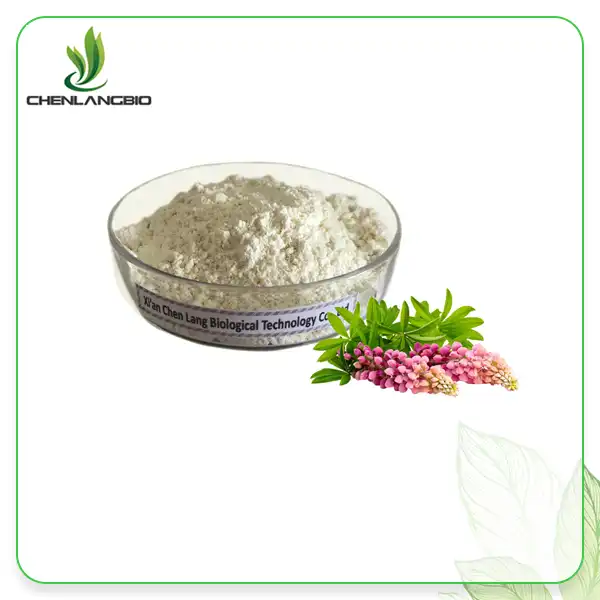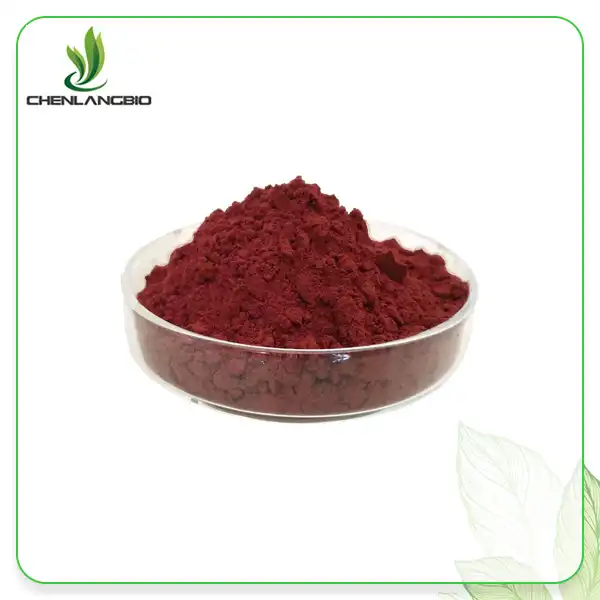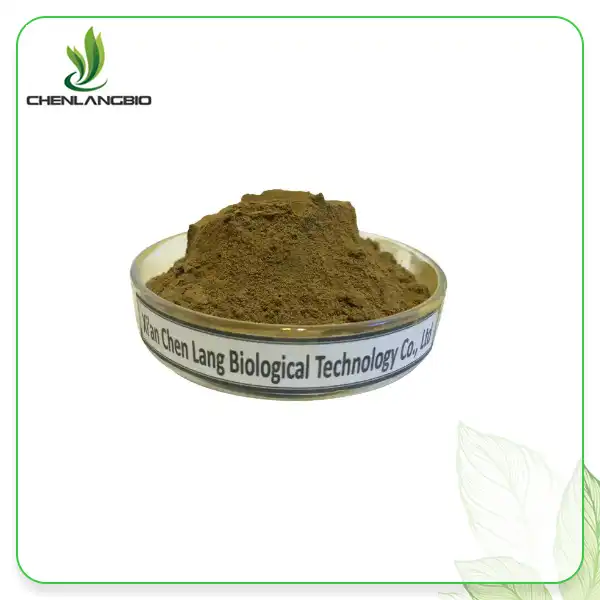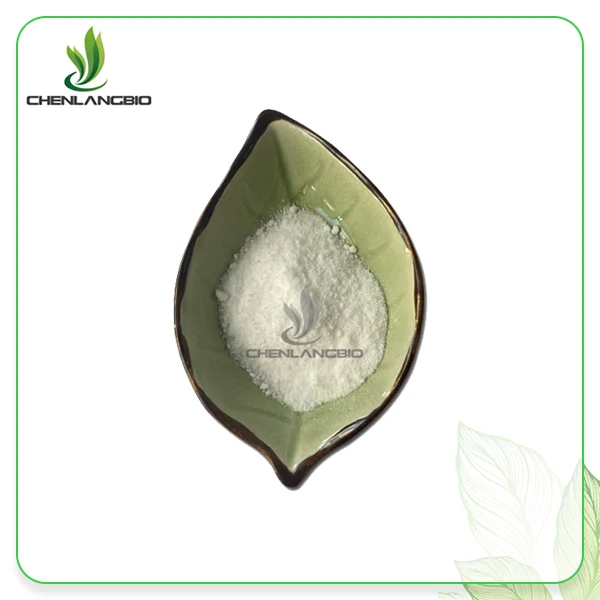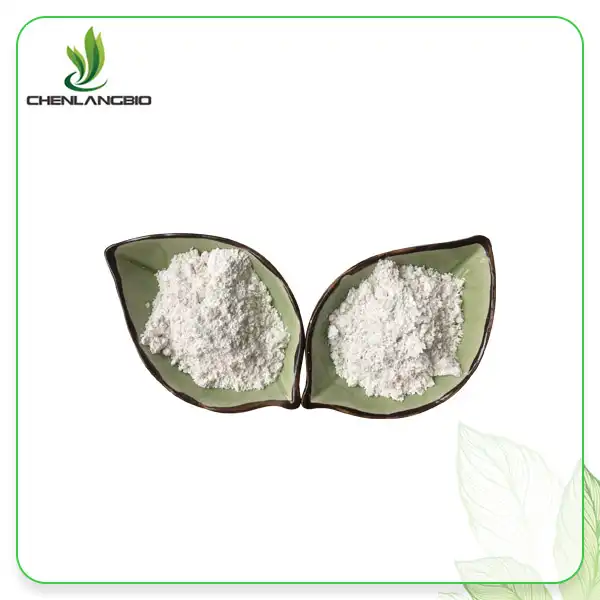Bifida Ferment Lysate vs Probiotics: Which Is Better for Sensitive Skin?
2025-11-25 20:03:02
Introduction – Why Sensitive Skin Needs Microbiome-Safe Ingredients
Bifida ferment lysate has become a key ingredient in modern microbiome skincare, especially for consumers struggling with sensitivity, irritation, and barrier damage. As interest in sensitive skin microbiome health continues to grow, many formulators and raw-material buyers are comparing Bifida Ferment Lysate vs probiotics to understand which ingredient offers better performance, stability, and long-term benefits for delicate skin.
Probiotics have been popular in marketing for years, but their use in cosmetic formulations raises complex questions about stability, regulation, and compatibility with preservatives. This has led many brands to explore postbiotic skincare ingredients, which offer the biological benefits of fermentation without the challenges of keeping live bacteria viable. Among these postbiotics, Bifida Ferment Lysate stands out for its proven ability to support skin barrier repair, calm inflammation, and improve resilience in reactive or compromised skin.
As the microbiome trend shifts from “live bacteria” to scientifically grounded postbiotic technology, skincare developers are looking more closely at how these two categories compare—and, more importantly, which one is truly better for sensitive skin. XI AN CHEN LANG BIO TECH provides a clear, research-informed overview to help cosmetic manufacturers, OEM/ODM labs, and ingredient buyers make the right choice for their formulations.
What Is Bifida Ferment Lysate? A Postbiotic Ingredient for Skin Barrier Repair
When discussing microbiome-friendly skincare, one of the most frequently searched terms is “What is Bifida Ferment Lysate”, and for good reason. Bifida ferment lysate is a scientifically advanced postbiotic skincare ingredient produced through the fermentation of Bifidobacterium—a well-researched microorganism known for its role in maintaining healthy skin and gut ecosystems. After fermentation, the bacteria are lysed to release a rich mixture of bioactive components, including peptides, amino acids, nucleotides, polysaccharides, and cellular metabolites. These fragments are what deliver the ingredient’s powerful skin barrier repair and soothing benefits.
Unlike probiotics, which rely on “live bacteria,” it contains no living cells, making it significantly more stable, safer, and easier to formulate across different product categories. This stability is a major reason why global skincare brands—especially those focused on sensitive skin and barrier health—favor postbiotics over probiotics. Bifida Ferment Lysate provides the functional benefits of probiotic metabolism without the regulatory, preservative, or shelf-life challenges associated with live cultures.
From a functional perspective, the bifida ferment lysate benefits are rooted in its ability to reinforce the skin’s natural defense system. It supports filaggrin production, strengthens tight-junction proteins, and reduces transepidermal water loss (TEWL). In addition, it modulates inflammatory pathways and helps the skin handle environmental stress more efficiently. These characteristics make it one of the most valuable active ingredients in modern formulations targeting sensitive, reactive, or compromised skin.
As the skincare industry moves toward microbiome-based innovation, bifida ferment lysate has become a flagship example of how biotechnology can elevate product performance. Its compatibility with serums, essences, creams, and post-procedure products gives formulators tremendous flexibility—something probiotics simply cannot match.
What Are Probiotics in Skincare? Understanding Live Bacteria in Cosmetic Formulations
While bifidaferment lysate represents the new generation of microbiome-friendly actives, many formulators still encounter questions about probiotics in skincare and how they compare to postbiotics. In the strict scientific sense, probiotics refer to live bacteria that provide benefits when applied to the skin or ingested. Common examples include Lactobacillus and Bifidobacterium species. However, when it comes to cosmetic formulations, using live bacteria skincare ingredients is far more complex than it might appear in marketing claims.
True probiotic skincare ingredients require bacteria to remain alive and active until the moment of application—a requirement that is extremely difficult to meet within traditional cosmetic systems. Standard preservatives, emulsifiers, pH conditions, and packaging formats are not compatible with sustaining viable bacteria. This is why many “probiotic” skincare products on the market do not actually contain live organisms; instead, they contain bacterial extracts, ferment filtrates, or lysates, which technically fall under postbiotic categories.
Even when formulators attempt to incorporate real probiotics, challenges quickly arise. Probiotics stability in cosmetics is notoriously poor; bacteria lose viability due to temperature fluctuations, oxygen exposure, preservative systems, and pH changes. This unpredictability limits the use of live probiotics in large-scale commercial products, especially for global brands that require long shelf life and consistent batch performance.
For probiotics for sensitive skin, the picture becomes even more complicated. While certain probiotic metabolites may help support microbiome balance, the presence of live bacteria can introduce potential risks or regulatory challenges—particularly in markets with strict cosmetic guidelines. Sensitive skin users often have compromised barriers, increasing the importance of stability, safety, and predictability of the ingredients used.
These limitations highlight the increasing industry shift toward probiotic vs postbiotic discussions. Where probiotics struggle with viability and compatibility, postbiotics—such as Bifida Ferment Lysate—offer a stable and science-backed alternative. They deliver the biological benefits associated with probiotics but without the safety, regulatory, or formulation complexities linked to keeping bacteria alive.
This growing recognition explains why formulators frequently compare probiotics vs Bifida Ferment Lysate, especially when targeting sensitive skin, barrier repair products, or post-procedure care. Probiotics may sound appealing from a marketing standpoint, but in real-world formulation work, they rarely meet the stability or performance requirements of modern cosmetic products.
Bifida Ferment Lysate vs Probiotics: Which Ingredient Performs Better for Sensitive Skin?
As the skincare industry adopts a more microbiome-focused approach, formulators frequently compare Bifida Ferment Lysate vs probiotics to determine which ingredient delivers safer, more consistent benefits—especially for sensitive skin. While probiotics have long been marketed for their “live bacteria” appeal, the clinical and formulation realities tell a different story.
1. Stability and Formulation Compatibility
The biggest difference lies in stability. Probiotics depend on survival to deliver benefits, but live bacteria cannot remain viable in standard cosmetic systems—preservatives, emulsifiers, pH levels, oxygen exposure, and heat all reduce viability dramatically. In contrast, Bifida Ferment Lysate, as a postbiotic, contains no living cells. It remains fully stable in serums, essences, creams, and masks, ensuring consistent performance across shelf life.
This alone positions Bifida Ferment Lysate as the more practical and reliable option for microbiome skincare formulations.
2. Safety and Sensitive-Skin Tolerance
For reactive or compromised skin, predictability is crucial.
Because probiotics involve live bacteria, the risk of irritation, instability, or regulatory complications increases—especially for users with impaired skin barriers. Postbiotics, by contrast, are non-living, highly purified, and thoroughly tested for safety. This makes Bifida Ferment Lysate significantly safer for sensitive skin, including post-procedure care and dermatology-inspired products.
3. Mechanistic Benefits: Repair vs. Microbial “Support”
While probiotics may provide general microbiome support, they lack the targeted functional activity found in postbiotics. Bifida Ferment Lysate performance is rooted in its scientifically documented mechanisms:
•strengthening tight-junction proteins
•reducing TEWL
•calming inflammation
•supporting DNA repair
•improving microbial balance without live bacteria
These targeted effects make postbiotics far more efficient at resolving core sensitive-skin issues—not just surface symptoms.
4. Regulatory and Global Compliance Advantages
Probiotics face regulatory challenges due to their live status. Many regions restrict the use of live bacteria in cosmetics or classify them under pharmaceutical regulations. Postbiotic vs probiotic skincare comparisons often reveal that postbiotics are far easier to commercialize globally. Bifida Ferment Lysate fits seamlessly within global cosmetic compliance frameworks, reducing risks for brands exporting internationally.
5. Final Verdict: Which Is Better for Sensitive Skin?
While probiotics have value in wellness and nutrition, their cosmetic applications are limited. Bifida ferment lysate is the clear winner for sensitive skin, offering better stability, higher safety, broader functional activity, and more predictable results. For brands focused on barrier repair, dermatology-grade care, or microbiome-friendly formulations, postbiotics deliver exactly what sensitive skin needs—without the complexities of live bacteria.
Why Postbiotics Are More Stable and Effective for Sensitive Skin Formulations
One of the biggest shifts in the microbiome skincare category is the movement away from live probiotics and toward well-characterized postbiotics—ingredients like Bifida Ferment Lysate that harness the biological benefits of fermentation without the instability of living cells. For formulators working on sensitive-skin products, this is more than a trend; it’s a practical, science-driven decision.
1. Postbiotics Offer Superior Stability in Cosmetic Systems
Unlike live bacteria, postbiotics do not require special handling, refrigeration, or protective encapsulation. They remain active across a broad range of:
•pH systems
•emulsification processes
•preservative systems
•temperature conditions
This stability makes them ideal postbiotic ingredients for sensitive skin, where consistency and microbiome safety are non-negotiable. Formulas containing postbiotics remain effective throughout their entire shelf life, a key advantage for brands selling globally.
This stability is a core driver behind the growth of postbiotic skincare benefits in both high-end and mass-market products.
2. No Risk of Live Bacterial Overgrowth or Compliance Issues
Sensitive skin often has a weakened barrier, making it more vulnerable to irritation or imbalanced microbial activity. Probiotics, by definition, introduce live microorganisms into this compromised environment, which can be unpredictable.
Postbiotics avoid these concerns entirely. With no live cells, they eliminate:
•viability issues
•contamination risks
•overgrowth concerns
•inconsistent activity
•regulatory restrictions
Compared with probiotic vs postbiotic skincare, postbiotics deliver all functional benefits without the complications.
3. Targeted, Bioactive Molecules Designed to Support Repair
Postbiotics like Bifida Ferment Lysate contain highly functional fragments—nucleotides, peptides, amino acids, polysaccharides—that directly support:
•barrier reinforcement
•inflammatory modulation
•microbial balance
•cellular repair
For sensitive or reactive skin, these postbiotic skincare benefits translate to visible improvements in hydration, tolerance, and resilience.
Probiotics, meanwhile, depend on survival and metabolic activity in the final formula—something difficult to guarantee in most cosmetic systems.
4. Better Global Compliance for Exported Skincare Products
Live bacteria introduce regulatory uncertainty, as many regions treat probiotics as pharmaceutical agents. Postbiotics bypass this entirely. This is why microbiome-friendly skincare formulas built with postbiotics are far easier to export to EU, U.S., Korea, SEA markets, and the Middle East.
For OEM/ODM brands serving multiple regions, postbiotics eliminate compliance challenges before they arise.
How to Formulate With Bifida Ferment Lysate: Usage, Percentage & Compatibility
As demand for microbiome-supporting actives grows, more brands are incorporating Bifida Ferment Lysate into serums, creams, lotions, post-treatment essences, and barrier-repair products. While the ingredient is known for being exceptionally stable and versatile, formulators still need clear guidelines on how to formulate Bifida Ferment Lysate to achieve the best performance.
Below is a practical, industry-level Bifida Ferment Lysate formulation guide designed specifically for cosmetic chemists and OEM/ODM developers.
1. Recommended Usage Levels (2–10% Depending on Formula Type)
The optimal Bifida Ferment Lysate usage percentage varies by product category:
•Serums / Essences: 5–10% for high-efficacy repair or sensitive skin formulas
•Creams / Lotions: 2–6% for barrier support and microbiome balance
•Sheet Masks / Ampoules: 5–10% for intensive soothing
•Post-Procedure Skincare: 5–8% for recovery-focused products
Higher concentrations deliver stronger barrier-repair and soothing results, while lower percentages are appropriate for daily-maintenance products. Because the ingredient is water-soluble, it integrates smoothly into aqueous phases without altering viscosity significantly.
2. Ideal Formulation Formats for Bifida Ferment Lysate
Bifida Ferment Lysate serum formulation is the most popular format due to the ingredient’s high permeability and excellent skin affinity. Other effective formats include:
•barrier creams
•calming moisturizers
•microbiome-balancing toners
•gel essences
•overnight repair masks
•post-sun soothing gels
Its versatility allows formulators to design full product lines with consistent microbiome-support positioning.
3. Compatibility With Common Skincare Actives
One of the strengths of formulating with postbiotics is excellent compatibility across ingredient categories.
Compatible with:
•hyaluronic acid
•ceramides & cholesterol
•niacinamide
•panthenol
•centella asiatica (madecassoside/asiaticoside)
•peptides
•amino acids
•antioxidants (vitamin C derivatives, resveratrol)
Bifida Ferment Lysate works particularly well in microbiome skincare formulation systems where the goal is to strengthen tolerance and reduce inflammatory triggers.
Avoid:
♦extremely low pH (< 3.5)
♦high-ethanol systems
♦incompatible conservative systems with extremely high ionic strength
These are not common in gentle or sensitive-skin products, so the ingredient is generally very easy to work with.
4. Processing Guidelines for Stability
To maintain maximum activity during manufacturing:
♦Add during the cool-down phase (< 45°C)
♦Avoid prolonged exposure to high heat
♦Use gentle mixing to preserve peptides and polysaccharide structures
♦Add after emulsification if used in creams
♦Compatible with most broad-spectrum preservatives
Its excellent postbiotic stability in formulations makes it ideal for global brands requiring long shelf life and clean manufacturing processes.
5. Packaging Considerations
Because bifida ferment lysate is water-based and stable, it can be packaged in:
♦glass dropper bottles
♦airless pumps
♦lotion bottles
♦sheet mask sachets
♦ampoules
No special microbiome-protection packaging is needed, unlike probiotic-based formulations.
Why Choose CHEN LANG BIO TECH as Your Bifida Ferment Lysate Supplier
As global interest grows in microbiome-focused and sensitive-skin formulations, choosing a reliable bifida ferment lysate supplier has become a critical step for brands, OEM/ODM manufacturers, and R&D laboratories. CHEN LANG BIO TECH has positioned itself as a trusted partner in the cosmetic raw material sector by offering stable, high-purity postbiotic ingredients supported by strong documentation, consistent quality, and excellent global supply capabilities.
1. High-Purity, Consistent Bifida Ferment Lysate for Professional Formulations
Our bulk bifida ferment lysate is produced through controlled fermentation and lysate extraction using food-grade Bifidobacterium strains. Each batch undergoes strict microbial, heavy metal, and purity testing to ensure consistency for downstream production. This level of standardization is essential for formulators who need reproducible results across multiple batches of serums, creams, and essences.
2. Comprehensive Documentation for Global Cosmetic Compliance
Every shipment is supported by complete regulatory and technical documents, including:
♦COA (HPLC)
♦MSDS
♦TDS / formulation guidance
♦ISO certificates
♦Halal & Kosher
♦Non-GMO, allergen-free statements
♦Export documentation
These documents reduce regulatory risk for brands selling in the U.S., EU, Middle East, Korea, Southeast Asia, and LATAM. Buyers often prioritize suppliers who provide complete paperwork, and this is one of the reasons many choose CHEN LANG BIO TECH over local competitors.
3. Flexible MOQ & Stable Inventory for OEM/ODM Manufacturers
We accommodate a wide range of order sizes—from R&D quantities to full-scale production. Our wholesale bifida ferment lysate supply chain ensures stable inventory, allowing manufacturers to produce continuously without interruption. This flexibility is especially valuable for new brands running pilot batches or testing multiple formula variations.
4. Technical Support for Formulation and Microbiome-Safe Development
Our team provides practical guidance based on real-world formulation experience:
♦Recommended usage levels (2–10%)
♦pH & temperature guidelines
♦Compatibility advice with ceramides, HA, peptides, niacinamide, etc.
♦Microbiome-safe formulation recommendations
♦Ideas for serum, recovery essence, and sensitive-skin product concepts
This level of technical support helps brands accelerate development timelines and reduce formulation errors.
5. Trusted by International Skincare Developers
CHEN LANG BIO TECH supplies postbiotic and fermentation-derived actives to private-label brands, clinical skincare companies, and OEM factories across Asia, Europe, and North America. While we do not disclose client identities, our bifida ferment lysate is used globally in:
♦sensitive-skin repair serums
♦anti-redness & anti-inflammatory creams
♦post-procedure recovery lines
♦microbiome-balancing essences
♦high-end barrier-repair products
Our reputation is built on reliability, stable quality, fast delivery, and transparent communication—qualities that matter most to serious buyers.
Conclusion — Why Bifida Ferment Lysate Outperforms Probiotics for Sensitive Skin
As the skincare industry moves deeper into microbiome science, the shift from probiotics to postbiotics has become clear and decisive. While the idea of “live bacteria” once appealed to marketing teams, real-world formulation experience shows that sensitive skin requires ingredients with stability, safety, and predictable biological activity. Bifida Ferment Lysate delivers precisely that—consistent performance, strong barrier support, anti-inflammatory effects, and proven resilience-building benefits that probiotics simply cannot match in modern cosmetic systems.
For brands developing sensitive-skin, barrier-repair, or recovery-focused products, choosing a postbiotic such as Bifida Ferment Lysate allows them to offer results backed by both science and consumer experience. Its compatibility with a wide range of formulations, international compliance advantages, and growing global demand make it not just a trend, but a long-term, high-value active for next-generation skincare.
As consumers increasingly look for products that strengthen rather than stress the skin, bifida ferment lysate stands out as the ingredient that aligns best with efficacy, innovation, and real-world formulation performance.
Looking for a trusted bifida ferment lysate supplier for your next skincare project? At XI AN CHEN LANG BIO TECH CO., LTD, we provide high-purity, stable, and globally compliant postbiotic ingredients trusted by private-label brands, OEM/ODM manufacturers, and formulation labs worldwide.
📩Email: admin@chenlangbio.com
📱 WhatsApp: +86-17782478823
Let our team help you develop effective, microbiome-safe formulations with premium postbiotic ingredients.
FAQ
Q1. What makes bifida ferment lysate better than probiotics for sensitive skin?
Bifida ferment lysate is a stable postbiotic, meaning it does not contain live bacteria. It is safer, more predictable, and easier to formulate than probiotics, especially for sensitive skin that requires minimal irritation and maximum stability.
Q2. Can bifida ferment lysate be used in high-performance serums?
Yes. It is commonly used at 5–10% in repair serums and microbiome essences because of its excellent solubility, skin affinity, and proven barrier-strengthening effects.
Q3. Is bifida ferment lysate safe for daily use?
Yes. As a non-living postbiotic, it is highly stable, non-irritating, and well-tolerated by sensitive and reactive skin types.
Q4. Can bifida ferment lysate replace probiotics in skincare formulations?
In most cases, yes. Compared with probiotics, it offers superior formulation stability, fewer regulatory challenges, and stronger benefits for sensitive skin.
Q5. What product types commonly use Bifida Ferment Lysate?
It is widely used in repair serums, barrier creams, soothing essences, sheet masks, and post-procedure recovery products.
Send Inquiry
Related Industry Knowledge
- Palmitoylethanolamide Powder for Athletes: A Game-Changer in Recovery
- Benefits of Helichrysum Arenarium Flower Extract
- Is Centella Asiatica An Antioxidant
- Is Nitenpyram Safe for Pets
- What is Monobenzone Powder Used for
- How is loratadine Absorbed
- Should Green Tea Extract be Taken with Food
- What is the Benefit of Sophoricoside
- How does Hydroxyphenyl Propamidobenzoic Acid Compare To Other Soothing Ingredients
- Can Dihydromyricetin Dispel the Effects of Alcohol



